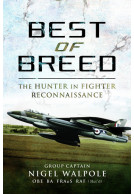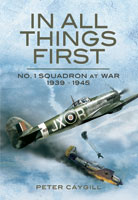Hitler's Revenge Weapons (eBook)
The Final Blitz of London
Imprint: Pen & Sword Aviation
File Size: 18.6 MB (.epub)
Pages: 232
Illustrations: 150 black and white illustrations
ISBN: 9781526722898
Published: 11th April 2018
| Other formats available | Price |
|---|---|
| Hitler's Revenge Weapons Paperback Add to Basket | £10.49 |
| Hitler's Revenge Weapons Hardback Add to Basket | £17.50 |
From September 1940 until May 1941, Britain - especially Greater London - suffered heavily under a barrage of day and night-time raids by the then mighty Luftwaffe; raids which killed some 20,000 people and destroyed or damaged one million homes during what came to be known as the London Blitz. A ‘baby blitz’ followed, from January to May 1944, which was destined to be the final manned bomber offensive by a much depleted Luftwaffe. Afterwards, there came the last gasp, the final blitz on London, this time delivered by the V1 flying bombs and V2 rockets which were aimed at the capital. Overall, the V weapons killed or seriously injured 31,000 in London and destroyed or seriously damaged 1.6 million houses throughout Britain. Yet despite all this, British industry, economy and morale remained largely intact.
Group Captain Nigel Walpole grew up in London during the Blitz and he has traced the full history of the V1 'doodlebugs' and V2 rockets that terrorised so many at this time. He looks at the infamous missile development site at Peenemunde and the engineers who brought Hitler's horrific visions to life. He reports his vivid memories of the three Blitz campaigns and the countermeasures taken in response to them. Having been granted direct access to the history of the V weapons, he describes the evolution, development, production deployment and launch of the flying bombs and rockets. Whilst acknowledging the terrible damage inflicted by these weapons, Nigel also recognises them as an example of Germany’s extraordinary capacity for innovation and determination during one of the darkest periods of world history.
The launching of V1 flying bombs and V2 rockets against London marked Hitler's final attempt to terrorise the British into submission, and though they failed in this they nevertheless caused considerable damage, killing in excess of 8,000 people and seriously injuring a further 23,000. The book begins in the early 1930's with the origins of Germany's rocket programme and the brilliant minds which shaped it, but while they were largely inspired by the idea of using the technology to conquer space, it was the desire of the Nazis to explore new methods of waging war not prohibited by the Treaty of Versailles which provided its real impetus. It describes the years of testing at Peenemünde, the opening of the campaign against Britain, and the efforts of the Allies to counter it, by bombing research facilities, attacking the launch sites, and ultimately advancing the front line to push the weapons out of range. The book also takes a look at other V weapons, including the development of V2 to reach the United States, and also the V3 which was intended to devastate London with a relentless barrage of high velocity shells, but, hampered by its static as well as obvious and inviting appearance, inevitably fell victim to Bomber Command before it could be unleashed.
Pegasus Archive
Read the full review here
Combining the technical history of the devices, with the evolution and development, the desperate attempts to protect the capital and the final overrunning of the launch sites, this is both an interesting study of the weapons programme and a personal history of someone on the receiving end.
The Armourer, October 2018
Click here to listen to interview
BBC Radio Suffolk, 30th July 2018 with presenter Lesley Dolphin
NOTE: set cursor to 30:50
It is quite a complex story and the book does a very good job of telling it, with the added element of being told by an author who experienced being on the receiving end of the assault on London.
Military Model Scene, Robin Buckland
Read the complete review here.
I have just read Nigel Walpole's latest book; it was most enjoyable. The author weaves a fascinating tale of what happened in the Third Reich in the development of their Vergeltunswaffen as well as the impact they had on the populations in the target areas. It was interesting to discover that both he in North London and his wife in Holland had personal experience of the devastation caused by these weapons.
Alex Weiss
The author has been painstaking with his research and included visits to Peenemunde, Mimoyecques and other sites in mainland Europe where these weapons were developed and from which they were launched. He has included many fascinating photographs of the weapons themselves, pictures of them taken by photo-reconnaissance aircraft as well as images of their various different launch sites. Along with the V1 and V2, he also provides details of the V3 and potential future developments of the V2 (A4) missile.
As an experienced fast-jet pilot himself who also undertook fighter reconnaissance, he gives an expert account of the problems the allied air forces had in trying to locate the launch sites and destroy the weapons before they were launched.
I thoroughly recommend this book to anyone interested in the subject.
I have just read Nigel Walpole's latest book; it was most enjoyable. The author weaves a fascinating tale of what happened in the Third Reich in the development of their Vergeltunswaffen as well as the impact they had on the populations in the target areas. It was interesting to discover that both he in North London and his wife in Holland had personal experience of the devastation caused by these weapons.
Alex Weiss
The author has been painstaking with his research and included visits to Peenemunde, Mimoyecques and other sites in mainland Europe where these weapons were developed and from which they were launched. He has included many fascinating photographs of the weapons themselves, pictures of them taken by photo-reconnaissance aircraft as well as images of their various different launch sites. Along with the V1 and V2, he also provides details of the V3 and potential future developments of the V2 (A4) missile.
As an experienced fast-jet pilot himself who also undertook fighter reconnaissance, he gives an expert account of the problems the allied air forces had in trying to locate the launch sites and destroy the weapons before they were launched.
I thoroughly recommend this book to anyone interested in the subject.
About Nigel Walpole
Nigel Walpole joined No.26 (Hunter Day Fighter) Squadron in 1955, served on Swift and RF-101 (USAF) tactical reconnaissance squadrons, commanded No.234 (Hunter FGA), No.II (Hunter FR10) and No.12 Buccaneer Squadrons, before his appointment as OC Operations Wing at RAF Brüggen in 1977, flying Jaguars. He gained another perspective of air power as Brigade Air Support Officer, 16 Parachute Brigade, was made responsible for fast-jet operational training in the MOD and completed his career as the Assistant Chief of Staff Offensive Operations, Second Allied Tactical Air Force, in Germany. Retiring from the Service in 1988, he became the air weapons adviser to British Aerospace.



















